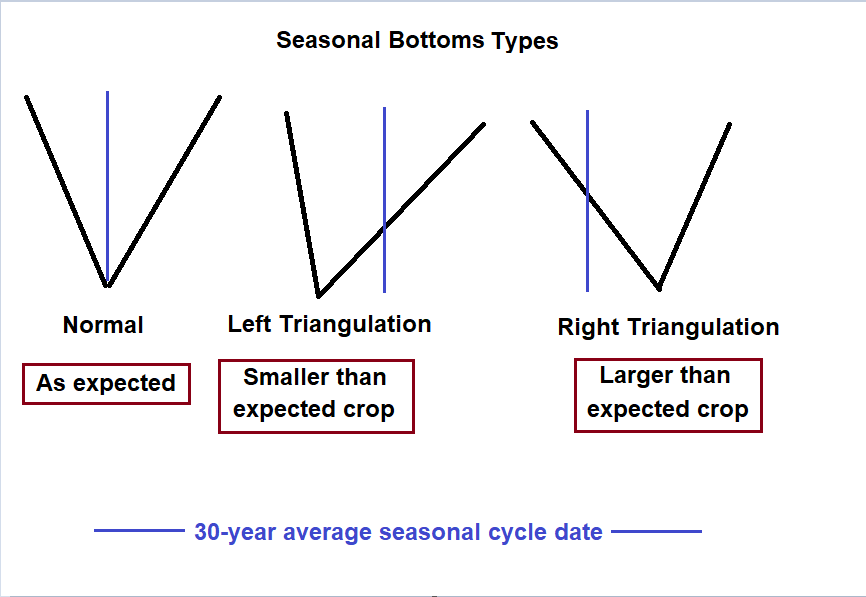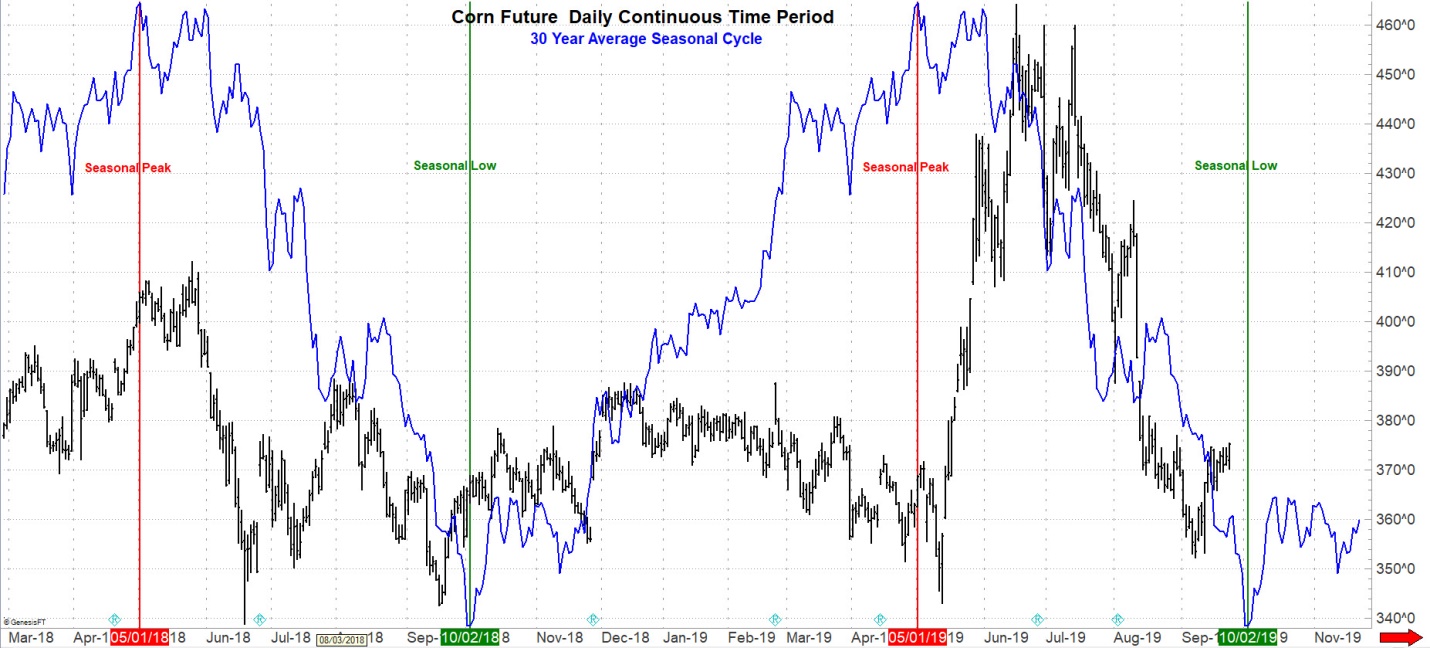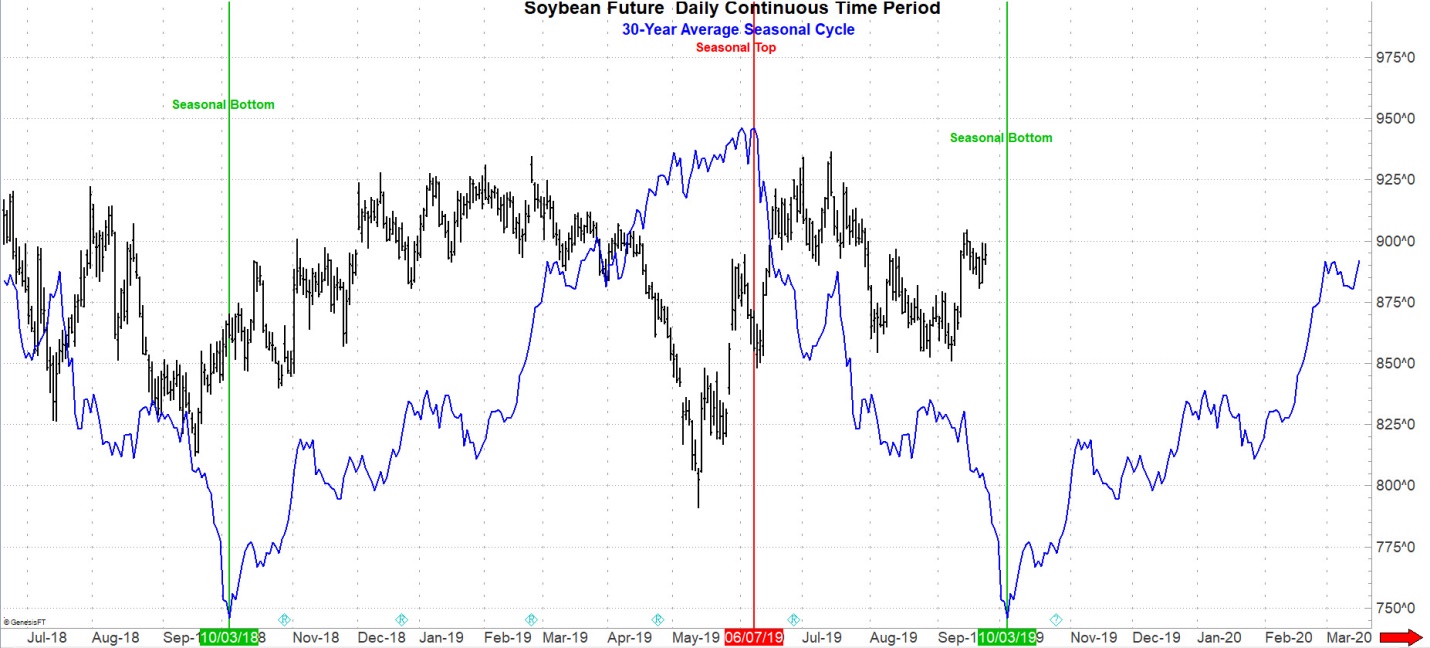What is Seasonality?
Seasonality can be defined as, “A characteristic of a time series in which the data experiences regular and predictable changes that recur every calendar year. Any predictable fluctuation or pattern that recurs or repeats over a one-year period is said to be seasonal.”
Seasonal effects differ from cyclical effects because seasonal cycles are limited to one calendar year. Whereas cyclical effects, like boosted sales due to low unemployment, can be longer or shorter than one year.
Seasonality in Corn and Soybean Futures
As the corn and soybean crops mature after a difficult planting season, it will be interesting to see is the normal seasonal patterns come to fruition this year – the first week of October.
Usually the size of the crop versus expectations determines if the seasonal bottom occurs early, on time or late.

A good case can be made that the seasonal bottom for soybeans occurred in mid-May. To date, the mid-May low remains intact (left triangulation). However, corn has penetrated its mid-May low, suggesting a seasonal low may not occur, at a minimum, until the first week of October (normal or right triangulation).


The one caveat this year presents is that late planting will cause a late start to harvest. Only 34% of soybeans are dropping leaves versus a 59% average and corn maturity is 29% versus a 57% average. Will a delayed harvest cause a delayed seasonal low (right triangulation)? We remain confident that the seasonal low in soybeans occurred in mid-May and the seasonal low in corn will occur during the first week of October.